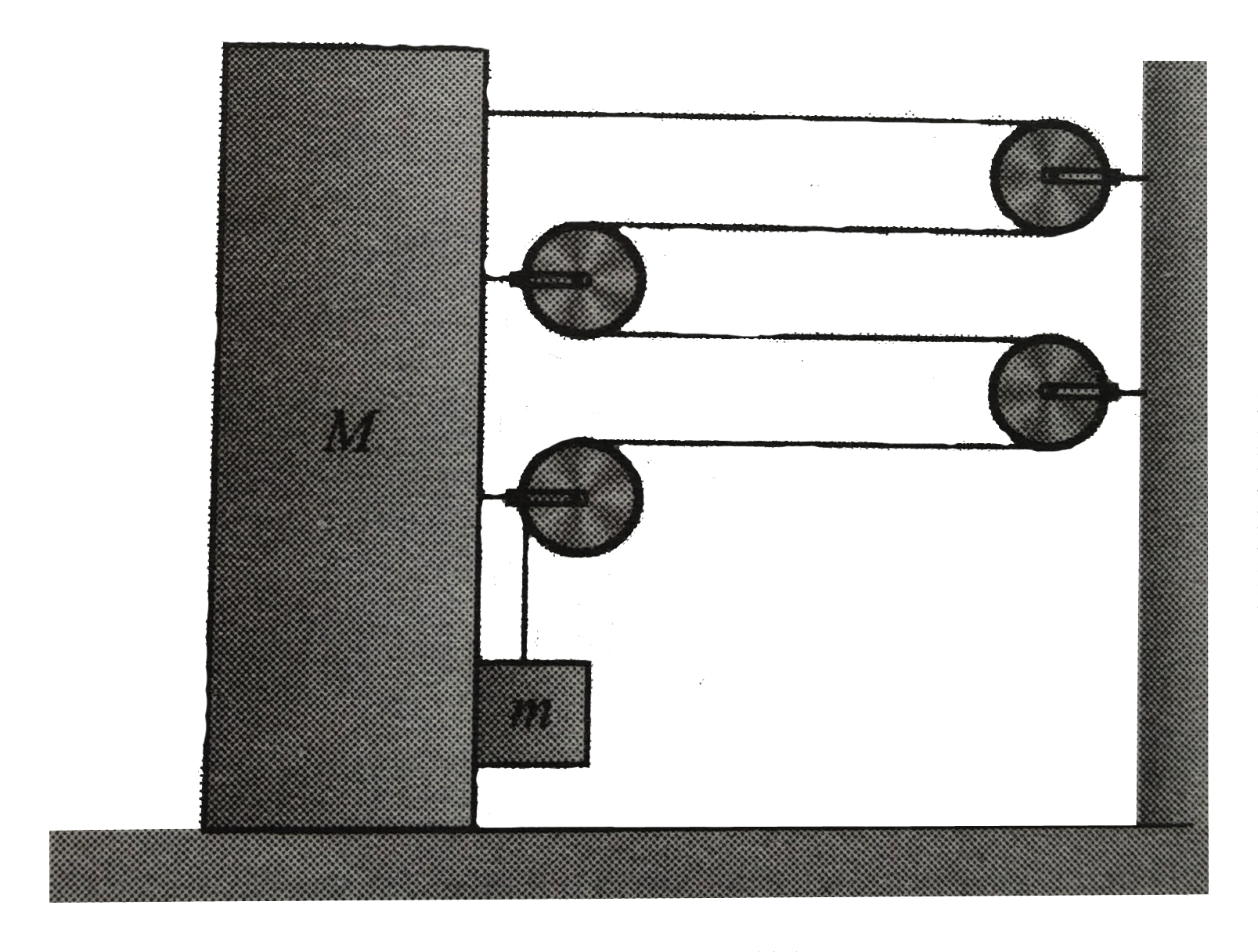In the arrangement shown in the fig. all pulleys are mass less and the strings are inextensible and light. Block A has mass M.
(a) If the system stays at rest after it is released, find the mass of the block B.
(b) If mass of the block B is twice the value found in part (a) of the problem, calculate the acceleration of block A.

The correct Answer is:(a) M
(b) g3
Step by step video, text & image solution for In the arrangement shown in the fig. all pulleys are mass less and the strings are inextensible and light. Block A has mass M. (a) If the system stays at rest after it is released, find the mass of the block B. (b) If mass of the block B is twice the value found in part (a) of the problem, calculate the acceleration of block A. by Physics experts to help you in doubts & scoring excellent marks in Class 11 exams.
Updated on:21/07/2023Topper's Solved these Questions
Similar Questions
A particle is acted upon by a force for 1 second whose X component remains constant at Fx=30N but y and z components vary with time as shown in the graph. Calculate the magnitude of change in momentum of the particle in 1 s. What angle does the change in momentum (Δ→P) make with X axis ?

View SolutionThe pulley of radius R can rotate freely about its axle as shown in the figure. A thread is tightly wrapped around the pulley and its free end carries a block of mass m. When the block is at a height h above the ground the system is released (i.e., the pulley is made free to rotate & the block is allowed to fall) and at the same instant the axle is moved up keeping it horizontal all the time. When the block hits the floor the axle has gone up by a distance 2h. Find the angle by which the pulley must have rotated by this time.

View SolutionA block of mass M is connected with a particle of mass m by a light inextensible string as shown in fig. Assuming all contaction surfaces as smooth, find the acceleration of the wedge after releasing the system.

View SolutionIn the system shown all the surfaces are frictionless while pulley and string are massless. The mass of block A is 2m and that of block B is m. The acceleration of block B immediately after system is released from rest is
View SolutionAn arrangement of the masses and pulleys is shown in the figure. Strings connecting masses A and B with pulley are horizontal and all pulleys and strings are light. Friction coefficient between the surface and the block B is 0.2 and between block A and B is 0.7 . The system is released from rest. (use g=10m//s^(2))
View SolutionIn the system shown in the figure, all surfaces are smooth. Block A and B have mass m each and mass of block C is 2 m. All pulleys are massless and fixed to block C. Strings are light and the force F applied at the free end of the string is horizontal. Find the acceleration of all three blocks.
View SolutionIn the system shown in the figure all surfaces are smooth, pulley and string are massless. The string between the two pulleys and between pulley and block of mass 5 m is parallel to the incline surface of the block of mass 4 m. The system is released from rest. Find the acceleration of the block of mass 4 m . ["tan" 37^(@) = (3)/(4)]
View SolutionIn the arrangement shown in the figure, block A of mass 8 kg rests on a horizontal table having coefficient of friction μ=0.5. Block B has a mass of 6 kg and rests on a smooth incline having inclination angle θ=sin−1(25) . All pulleys and strings are mass less . Mass of block C is M .
[g=10m/s2]

(a) Find value of M for which block B does not accelerate
(b) Find maximum value of M for which A does not accelerate.
View SolutionIn the arrangement shown in figure, pulley and string are light. Friction coefficient between the two blocks is mu whereas the incline is smooth. Block A has mass m and difference in mass of the two blocks is deltam . Find minimum value of m for which the system will not accelerate when released from rest.
View SolutionThree blocks A, B, & C are arranged as shown. Pulley and strings are ideal. All surfaces are frictionless. If block C is observed moving down along the incline at 1 m//s^(2) . Find mass of block B, tension in string and accelerations of A. B as the system is released from rest.
View SolutionIn the arrangement shown, the pulleys are smooth and the strings are inextensible. The acceleration of block B is :
View SolutionIn the arrangement shown in fig neglect the masses of pulleys and string and also friction Calculate acceleration of blocks A and B
View SolutionIn the figure shown the block A collides head on with another block B at rest. Mass of B is twice the mass of A. The block A stops after collision. The co-efficient of restitution is :

View SolutionString going over a pulley connects two blocks of masses m, and my. String and pulley are light. Calculate acceleration of centre of mass of blocks system.

View SolutionA block of mass M is connected with a particle of mass m by a light inextensible string as shown in fig. Assuming all contaction surfaces as smooth, find the acceleration of the wedge after releasing the system.

View Solution

